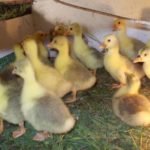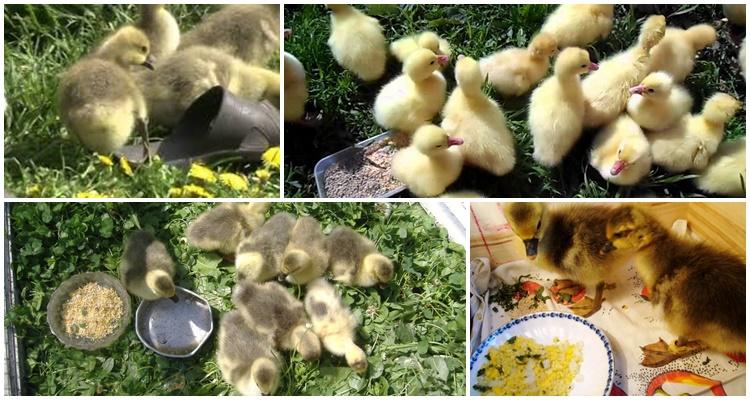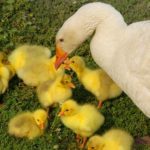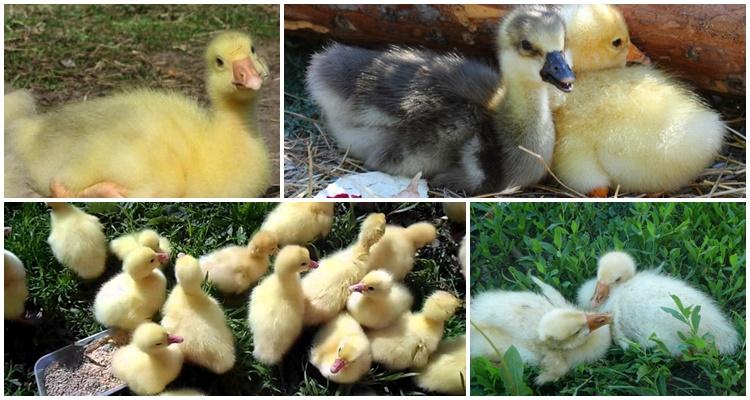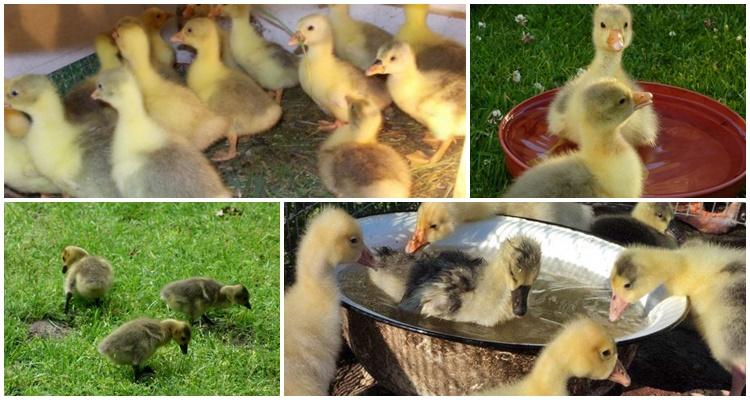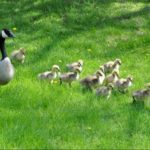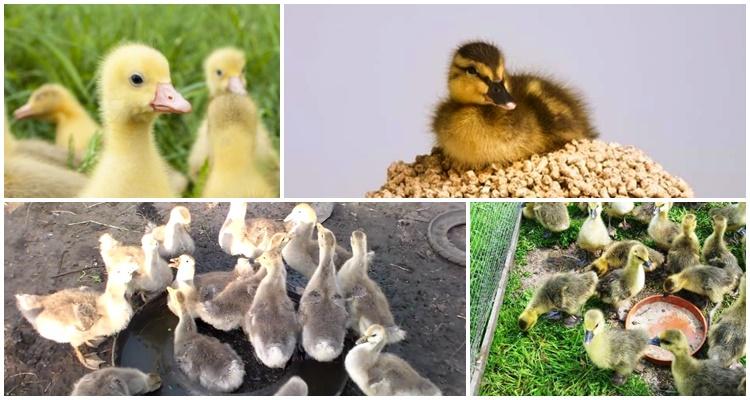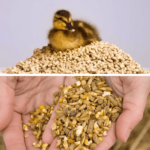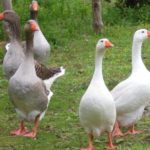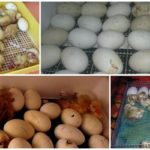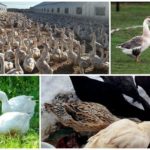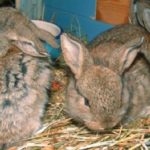Goslings are considered stronger and more resilient than young animals of other poultry. The choice of feeding ration is considered the most important element of early bird care. By choosing the right food, you can ensure rapid weight gain and avoid diseases. Let's consider what to feed young goslings and how to create a complete diet for healthy and weakened babies.
Why is it important to feed goslings properly?
Most geese are slaughtered between 2 and 7 months of age.By this time, the bird should gain weight and grow to the desired condition. Little goslings have an undeveloped digestive system, like all newborns, and therefore need special food. The right diet helps:
- grow quickly, gain weight;
- avoid indigestion, digest food well;
- protect the body from infections, parasites, and other diseases, strengthen the immune system.
Feeding begins with foods that are most easily digestible at a young age. An important element of feeding is grinding food so that babies do not choke and the digestive organs cope with the load. Then other components are gradually introduced in small portions. The digestive tract gets used to new foods, and babies receive the substances necessary for growth and development.
Feeding table for goslings depending on age
Feeding goslings bred in an incubator and hatched naturally by birds is carried out according to general rules. The diet is regularly adjusted by increasing portions and adding foods. For rapid growth, the bird should be given a walk, exposure to the sun and fresh air.
After birth
At home, in the first days, poultry farmers, according to tradition, begin feeding with the simplest and most natural product - eggs. As soon as the babies hatched, the fluff has dried, they immediately organize feeding. The eggs are hard-boiled in advance, the yolk is broken into crumbs, diluted with boiled water to a paste.
Goslings require 8 feedings, small portions are given so that after a couple of hours the baby is hungry and eats again. Depending on the condition of the young, some poultry farmers finely crush cereal or grain for day-old goslings, chop up grass and mix it into egg porridge.
2-10 days
From 2 days in summer in warm weather, goslings can be released into the enclosure. Food is given in small containers that are easy for babies to get out of. Approximate introduction of products by day:
- second - egg, greens, crushed grain with husk, milk (skimmed or dry);
- third - green onions, nettles, clover, legume tops, grains, carrots;
- fourth - boiled potatoes, root vegetables, cottage cheese, carefully broken peas.
After the 5th day, acceptable foods are combined so that the diet is balanced and varied. Consumption rates are given in the table.
Starting from the 6th day, fresh vegetables are included in the diet, after chopping them into small pieces. You can cook porridge (millet, corn), mix cottage cheese and shells into the food. The diet of 10-day-old goslings requires food of animal origin - bone meal, fish meal, and shellfish.
Information: from the age of one week, goslings are fed 6 times a day, the portions are increased.
11-21 days
If there are good places for walking, during the day the young animals feed on their own - they eat grass, roots, fruits, and shells. When grown without ponds, shellfish can be brought in and mixed into the feed.
At 2 weeks, the goslings have become stronger, can handle large portions at a time, and are transferred to 5 meals a day. To saturate the body with vitamins, special feed for young geese (PK-31) is introduced into the diet.
The cake is pre-steamed with boiling water and enriched with yeast. Potatoes should make up no more than a tenth of the diet. Crushed cereals and grain are fed at night in the summer. Goslings digest this food well. The young animals' diet is supplemented with seasonal vegetables and melons - pumpkin, zucchini, carrots. The volume of these ingredients is a fifth of the diet.
3 weeks and older
Fresh green grass is the main food in the summer for 3-week-old goslings. When free-range, the site is inspected to ensure there are no poisonous plant species. Useful for goslings:
- beet tops, carrot tops, legumes;
- clover, alfalfa, dandelion, sorrel.
For one-month-old goslings, the amount of green food is 2/3 of the total diet, about 200 grams. The menu includes a variety of products, including meat and fish meal, and shellfish. All types of birds eat well the leftovers from the master's table. Grain and waste from the mill are given at night; on high-calorie feed, the young animals quickly gain weight.
Table of norms for different types of products in grams per day for goslings:
| Age in days | |||||||
| 1-5 | 6-10 | 11-20 | 21-30 | 31-40 | 41-50 | 51-60 | |
| Cereals | 15 | 21 | 41 | 97 | 97 | 97 | 100 |
| Carrot | 5 | 20 | 20 | 20 | |||
| Wheat bran | 3 | 6 | 13 | 40 | 50 | 50 | 60 |
| Chopped greens | 5 | 20 | 60 | 100 | 200 | 300 | 500 |
| Animal feed | 2 | 4 | 14 | 28 | 25 | 25 | 17 |
| Milk | 25 | 50 | 50 | ||||
| Shells | 0.3 | 0.5 | 1 | 3 | 4 | 4 | 5 |
| Daily feed volume | 55.3 | 121.5 | 199 | 288 | 376 | 476 | 682 |
Diet including boiled potatoes (grams per day)
| Age in days | |||||||
| 1-5 | 6-10 | 11-20 | 21-30 | 31-40 | 41-50 | 51-60 | |
| Cereals | 15 | 15 | 30 | 35 | 55 | 55 | 60 |
| Carrot | 5 | ||||||
| Wheat bran | 3 | 5 | 15 | 40 | 40 | 40 | 30 |
| Chopped greens | 5 | 30 | 60 | 130 | 200 | 200 | 300 |
| Crushed potatoes | 20 | 40 | 100 | 120 | 130 | 225 | |
| Milk | 25 | 50 | |||||
| Shells | 0.3 | 0.5 | 1.5 | 2 | 3.5 | 3.5 | 3.5 |
| Cake | 4 | 15 | 25 | 25 | 25 | 25 | |
| Animal feed | 2 | 7 | 15 | 30 | 30 | 30 | 30 |
| Daily feed volume | 55.3 | 131.5 | 176.5 | 362 | 473.5 | 582.5 | 673.5 |
In hot weather, more succulent feed is introduced into the diet, grain is left for the last feeding. The goslings are fed according to a schedule or allowed to eat at will, ensuring that the feeders are constantly filled. If the regime is not followed, goslings often overeat, which leads to indigestion and a gain of excess fat mass.
At 2 months old, the goslings are adults, they can spend most of the day walking, and at this time they obtain food themselves. It is important to monitor what grows in places where geese feed. Useful herbs:
- nettle:
- dandelion;
- wild onions, garlic;
- knotweed;
- swamp duckweed;
- meadow bluegrass;
- spurge;
- wheatgrass;
- horsetail
Drinkers with fresh water are placed in the walking areas, and the geese drink a lot. When grown at home, a mixed type of diet is usually used.They give dry feed, make wet mash with juicy vegetables, cereals, boiled potatoes, cake, tops.
What is forbidden to give?
The goslings grab everything they can get, so the uneaten, soiled food is removed from the pallets. What foods should be excluded from the diet:
- hard dry herbs, thick dried stems and tops;
- expired additives, premixes, mixed feed;
- any food with traces of mold or spoilage;
- potatoes with greens and their tops;
- herbs that can cause poisoning are quinoa, ragweed, sedge, lily of the valley.
Fresh rye causes fermentation in the intestines of babies. Young animals are not given wet, cold grass; they are not allowed to walk immediately after rain.
Nursing weak goslings
Unhealthy goslings eat poorly, are inactive, and huddle together. Poultry farmers must separate weakened babies from the main stock, provide enhanced care and a balanced diet:
- check for the presence of parasites, carry out deworming, remove ectoparasites;
- maintain heat in the house: up to 7 days of age - 28 °, later - not lower than 22 °;
- if necessary, heat with lamps;
- add fish oil when feeding.
Patients are given a nutritional mixture with the addition of an antibiotic - beaten yolk is diluted in 100 milliliters of skim milk, sugar is added at the tip of a teaspoon. Penicillin is dissolved in the mixture in an age-appropriate dosage for young animals and fed.
Expert advice
Caring for newborn goslings is especially difficult. When buying young birds, one-week-old babies that are already a little stronger are more suitable for beginning poultry farmers. Recommendations from experts on raising goslings:
- It is better to keep the goslings indoors for the first 7-10 days, especially in cool weather.
- The temperature in the poultry house is maintained at 22-28°. In extreme heat, it is difficult for babies to breathe; if it is too cold, they huddle together and crush each other.
- Up to a week of age, the lamps are kept on constantly, and the lighting is dimmed at night.
- When preparing the feed, pay attention to the consistency - prepare a moist, crumbly, finely chopped mixture without any signs of stickiness or viscosity.
- For drinking use tap or filtered water.
- Equipment and dishes are washed regularly, bedding is partially replaced every other day.
- The diet includes mineral supplements - chalk, salt, crushed shells and small stones. They are displayed in separate containers or mixed into the feed.
- A grain of potassium permanganate is added to the water.
- If babies cough, have difficulty swallowing, or shake their heads, the food may be too dry, large or hard.
- When growing, it is important to consider the recommendations for a specific breed of geese.
The condition of the young animals is constantly monitored; if alarming signs appear, patients are separated and given special care.
Help: you should introduce grass and harsh ingredients into your diet that cleanse the digestive tract.
Healthy goslings run a lot and regularly visit the feeder. New feeds are introduced in small portions, monitoring the condition of the birds. The health of the livestock, rapid growth and development depend on the correctly chosen feeding ration. The quality and composition of the feed influence the taste and nutritional characteristics of the meat.

